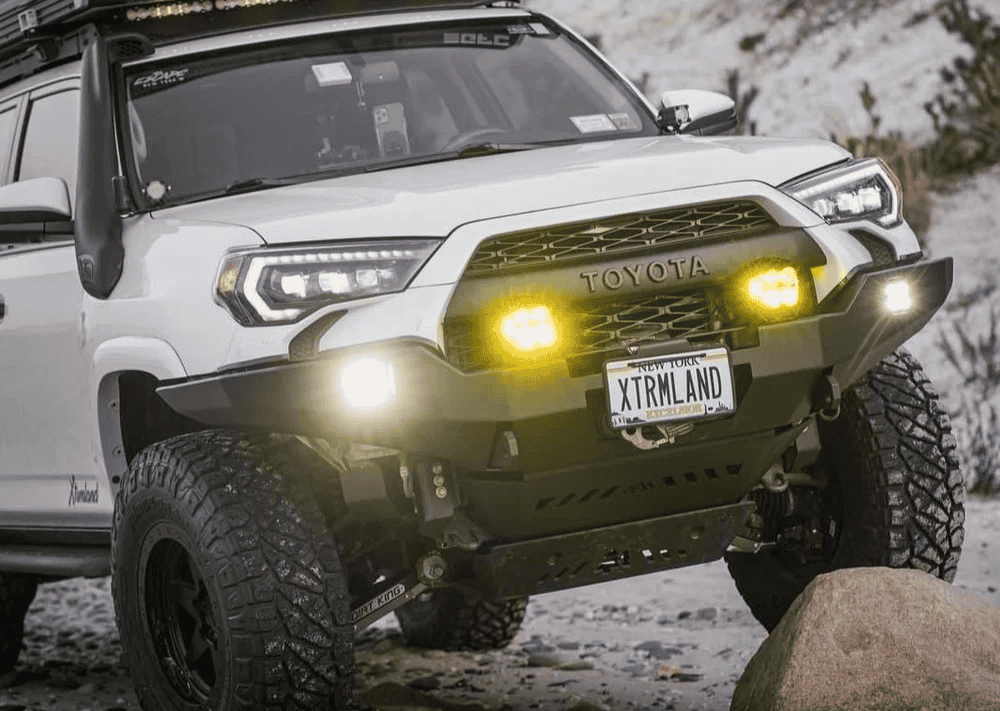Overland Vehicles

Lightweight expedition design starts with a simple truth. Every pound you remove pays dividends in stability, braking, traction, and endurance. On remote tracks, less mass means the suspension can react faster, the tires bite sooner, and recovery demands less effort when conditions deteriorate.
The goal is not minimalism for its own sake. It is targeted reduction that preserves durability and habitability. Think in systems rather than parts. Evaluate the vehicle as a whole, from structure to energy storage to cargo. Weight saved high and far from the axles matters most because it reduces roll and pitch, improves ride, and eases steering input in crosswinds.
Begin with a real scale session. Measure axle and corner weights in ready to roll trim, then set a target curb weight and a hard payload ceiling. Decide what must be onboard and what can be staged at resupply. Plan water and fuel as dynamic payloads, not permanent cargo. Treat weight like a budget and allocate it intentionally.
Space efficiency and load placement are your quiet power ups. Keep dense items low and centered. Use modular furniture that pulls double duty, and only bring the cookware or tools you truly use. Organize the interior so daily tasks are one step, not three.
A clean roof and smoothed airflow reduce fatigue and fuel burn. Choose low profile accessories, add fairings where practical, and select tires that fit the terrain with the least penalty. Proper alignment and tire pressure maintenance are free range.
When you pursue lower weight, reliability must rise in parallel. Favor parts with wide service networks and proven seals, bearings, and fasteners. Reduce complexity where possible so roadside fixes remain simple and safe.
Material science is the backbone of lightweight design. High strength aluminum and tailored steel grades offer excellent strength to weight when selected properly. Composite sandwich panels with honeycomb or foam cores provide stiffness with minimal mass for cabinetry and interior partitions. Structural adhesives paired with mechanical fasteners can distribute loads without adding unnecessary metal.
Focus on where material actually carries load. Use extrusions and formed panels that place thickness along stress paths while trimming it elsewhere. For interior structures, perforated and lattice forms can meet stiffness requirements with less material than solid panels.
Hardware choices add up quickly. Replace overbuilt brackets with laser cut or CNC formed pieces that follow the load. Swap steel fasteners where possible with appropriate grade aluminum or titanium, and keep bolt lengths tight to need. Use textiles for storage where rigid boxes are not required. Soft luggage and cargo nets cut weight while absorbing vibration.
Energy storage is heavy, so right sizing matters. Lithium iron phosphate batteries provide higher usable capacity per pound compared to legacy chemistries, and proper charging profiles extend service life. Pair storage with solar that fits your latitude and duty cycle rather than chasing peak wattage you never use. Insulation reduces heating and cooling loads, allowing smaller climate solutions that weigh less.
Unsprung mass dictates how well the tires track broken ground. Lighter wheels, appropriate tire sizes, and carefully chosen brake components sharpen control. Suspension tuning should account for the actual loaded weight, not a theoretical maximum. The goal is supple initial movement with control in compression and rebound so traction stays consistent.
Weight affects temperature. Lighter rigs stress brakes and driveline less on long descents and climbs. Ensure gear ratios match tire diameter and intended speeds so the engine or motor sits in an efficient band. Heat management improves when the vehicle is not dragging unnecessary mass.
A thoughtful payload plan separates wants from needs. Water is heavy, so map consumption realistically and top off near the trail rather than hauling full tanks across the highway. Fuel strategy should account for route scarcity while honoring axle limits. Food density, recovery gear selection, and spares all benefit from a test and measure approach rather than assumptions.
Test in stages. Load the vehicle, drive the terrain you expect, then remove or resize items that never get used. Weigh again and recheck corner balance. Document real consumption for power and water to refine storage and charging. Every iteration tightens the system and lifts performance.
Lightweight design also means right size comfort. Choose mattresses, seating, and galley arrangements that serve daily routines without excess structure. Ventilation and shade strategies reduce the need for large energy hungry climate systems. The outcome is a quieter, calmer interior that feels bigger because it is not burdened by mass.
When it is time to translate these principles into a purpose built vehicle, expert execution matters. Structural integration, electrical architecture, and cabinetry all need the same weight conscious mindset plus craftsmanship that survives washboard and weather. That is where a professional custom shop can turn theory into a rig that lasts.
If you are comparing platforms and layouts that favor efficiency, start with proven packages and real trail outcomes. See how capability and weight balance come together when you Explore overland rigs. For a tailored plan that matches your route, seasons, and payload, consider a Custom overland upfit that trims mass where it counts and reinforces where it matters.
A lighter rig is not just a number on a scale. It drives better, stops shorter, and wears less. Our team applies these principles during design reviews, material selection, and assembly so your vehicle feels composed on broken tracks and smooth on the interstate. To understand our approach and the experience clients have on handoff and beyond, visit Why choose OZK Customs. We build complete custom adventure vans, overland rigs, and commercial vehicles that carry smart weight and deliver real range.
Ready to drop weight without losing capability? Our team designs and builds complete overland vans and trucks that balance structure, systems, and comfort for real terrain. Tell us about your route, range targets, and payload, and we will spec a lighter, stronger build that drives farther and feels better everywhere. Start your custom overland build today.
ADDRESS:
6159 E Huntsville Rd, Fayetteville, AR 72701
PHONE:
(479) 326-9200
EMAIL:
info@ozkvans.com